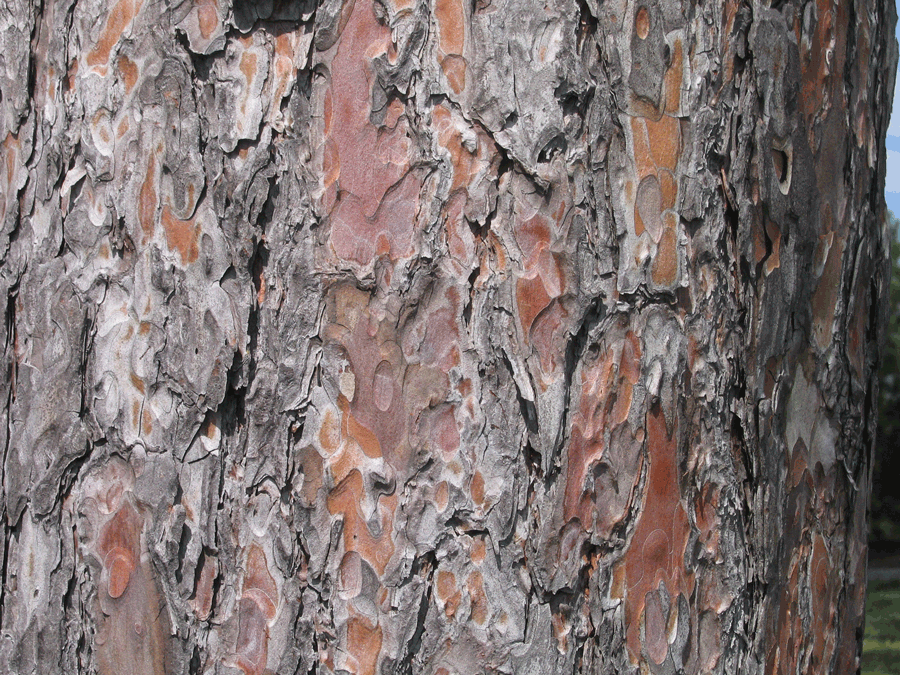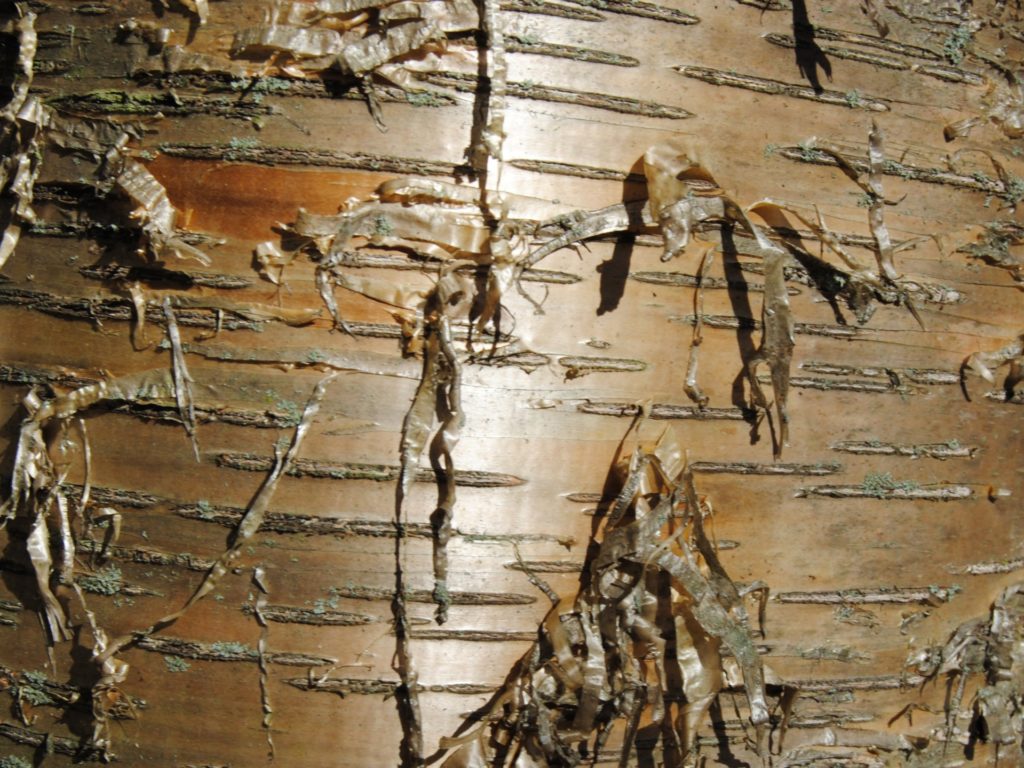Barking Up The Right Tree

By: Alicia Daniel.
After the leaves drop to the ground in a blaze of fall color, hardwood trees look bare and dead. Their naked branches and dark trunks offer little to go on for identification. In our mind’s eye and in a child’s drawing, winter trees have brown trunks. But do tree trunks really look that much alike? In nature, tree bark has as many different hues as fall leaves, a subtle but true rainbow of colors if you look closely. Getting to know bark is a great way to recognize winter trees.
Let’s start by exploring with the easiest trees to tell by their bark color, Paper and Gray Birch with their luminescent whiteness. These are the whitest trees in the forest reflecting back all the colors of the rainbow. The white bark accented with black chevrons near the branches helps the tree get through the winter. By reflecting sunlight the tree stays cooler and is less likely to crack and split with quick changes in temperature as warmer days flow into frigid nights. This protects their trunks since both species are pioneers, seeding into gaps, open lands and edges and having relatively short life spans (around 80 to 120 years) for developing thicker bark. Paper Birch bark tends to peel more than Gray Birch, so look for that textural clue to tell them apart.

White versus brown bark is a good place to start seeing winter trees. Now let’s explore the rainbow of colors: red, orange, yellow, green and purple. Not surprisingly, Red Pine has red bark. The bark changes from a dark red when the tree is wet to pinks, reds, grays and browns as it dries. Red Pine bark flakes off in a jigsaw puzzle pattern. This ability to slough off the bark makes the tree well adapted to fire, whose flames also aid in opening its cones. Red Pines need bare mineral soils to germinate, because their tiny seeds don’t pack enough oomph to root through a layer of dead leaves and duff. So Red Pine stands in Vermont are either planted (most likely in the 1930s to stabilize soils) or have germinated after a fire. One process (planting) leads to rows of Red Pines and the other (fire) does not.

Bigtooth Aspens can have orange bark in their top branches. Their close relatives, the Quaking Aspens have a green hue to their bark under a whitish powder that rubs off. Aspens of all types are able to photosynthesize through their bark continuing to convert sunlight to energy through the winter months. Bigtooth Aspen leaves have larger teeth along the leaf margin so both subtle differences in bark color and the fallen leaves at the base of the tree can help us tell these aspens apart in winter months. All aspens reproduce clonally, often creating stands of genetically identical trees.
Yellow Birches have a beautiful golden bark with shiny shredded curls in their middle years. This burnished color is especially beautiful in the late afternoon sun. As the trees age, the bark becomes darker and more platy. Yellow Birches can live to be 400 years old and grew abundantly in Vermont’s original forests up to fairly high elevations. Next time you pass a Yellow Birch scratch one of the twigs for a refreshing whiff of wintergreen.

Eastern Hemlocks have a purple hue to their inner bark, which you can detect if you squint at a hemlock forest. Next time you come across a hemlock stump crack open a piece of the bark to see this distinctive hue. It seems like a color more at home on a butterfly, bird or a flower than on a tree.
Color is just one bark clue to recognizing tree species; texture can be just as distinctive. The shaggy, grey shakes of the Shagbark Hickory or the burnt potato chips curls of the Black Cherry set them apart from other tree species in the winter.
Studying bark can become an adventure once you embark on it! We can all distinguish the evergreens from the hardwood, leaf-losing trees in winter because, well, evergreens are still green. But green isn’t the only tree color still alive in the winter landscape. With just a little effort, you can learn the bark color of several of the wild trees in Burlington’s forested parks and using the bark’s texture you can learn even more. After a while “the trees stand forth proclaiming their names to you . . .and soon become like the faces of your friends, known without thought and bringing each a host of associations,” writes Donald Culross Peattie in A Natural History of Trees. Once you start to recognize different trees by bark, there is so much they can tell you about the winter landscape.
To learn more about bark, check out the book, Bark: A Field Guide to Trees of the Northeast by Michael Wojtech.
